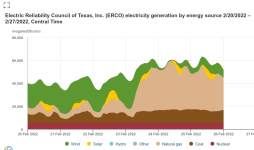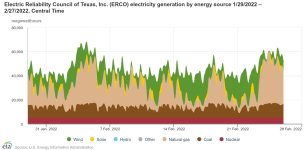No to nuclear power plants = yes to Russian invasion of Ukraine
Unfortunately, we were right, although we expected Putin to wait until Nord Stream 2 was up and running and the last nuclear plants in Germany were shut down. Apparently Putin has concluded that Germany is already dependent enough on Russia, so he can do anything right now.
What do anti-nuclear movements have to do with the war in Ukraine?
Anti-nuclearists who use renewables to fight nuclear power tell people that closed nuclear power plants will be replaced by renewables. This is not true. Nuclear power plants can operate non-stop at full capacity, no matter if the sun is shining and the wind is blowing. They cannot be replaced by windmills. What actually replaces nuclear power plants is gas, because gas is needed to compensate for sudden power fluctuations due to the instability of wind and sunshine.
The problem is that the largest supplier of gas to Europe, and Germany in particular, is Russia. If Russia turned off the gas tap, then Germany would have a very serious problem. Windmills and photovoltaics do not ensure energy security.
This is why Germany opposes Russia's exclusion from the SWIFT system. They would have no way to pay for the gas, and then Putin would cut off the gas supply. As Germany frantically searches for a way to take the leash off its neck, meanwhile Putin is bombing Ukraine with impunity.
Anti-nuclear organizations are Russia's Trojan horse, which by scaring people with yellow barrels with the

sign have led to the sabotage of the nuclear industry in their own countries and to gas addiction. Dear anti-nuclear people, Putin is proud of you. You have done a great job!
The same applies to Poland - if the anti-nuclear movements block the construction of nuclear power plants in Poland, then we will have to replace our aging coal-fired power plants with gas-fired ones. This is a road to nowhere.
The citizens of Germany should take to the streets and demand that plans to shut down the last 3 reactors in that country be abandoned. Also they should judge all those who have lied to the public for years, scaring the public with waste, mutants and radioactive clouds.
How do nuclear power plants give independence?
The EPR reactor, which is the world's largest reactor in terms of power (1,650 MW), can operate continuously at full capacity using only 32 tons of fuel per year. Not 32 thousand tons, not 32 million tons, just 32 tons and that's all. Such a small amount of fuel makes it no problem to make a fuel supply for several years. The amount of high-level waste is also 32 tons.
If the source of supply is cut off, the power plant can continue to operate, and in the meantime you can safely look for another supplier.
Fuel for nuclear power plants is purchased from various suppliers. Ukraine, after the invasion of Crimea, switched from Russian TVEL to American Westinghouse.
Yes to nuclear = yes to energy independence
#news #education #Russia #Ukraine #war #energy





